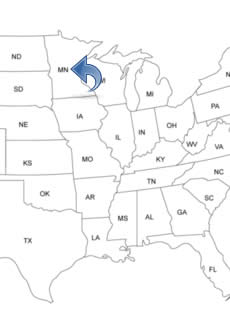MINNESOTA PEOPLE SEARCH!
- ✔ Contact Info
- ✔ Phone Numbers
- ✔ Criminal Records
- ✔ Income Info
- ✔ Neighbors
- ✔ People's Age
- ✔ Property Ownership
- ✔ And Much More
Minneapolis, Minnesota
Minneapolis is located in the southeastern part and is the largest city in the U.S. State of Minnesota. Minneapolis, The City of Lakes. The city is the primary business center between Chicago and Seattle. Nearly half of Minneapolis's population are of Swedish, Norwegian and German descent. Germans and Scandinavians together make up 43.8% of Minneapolis's population. Many professional teams are established in Minneapolis. (Minnesota Lynx, Minnesota Timberwolves, Minnesota Twins, Minnesota Vikings). Four of Minneapolis seven hospitals are ranked among America's best by U.S. News and World Report.
To See And To Do In Minneapolis
- Magical History Tour
- American Swedish Institute Museum
- Nicollet Mall
- Minneapolis Sculpture Garden
- Minneapolis Institute of Arts
- Stone Arch Bridge
- Gold Medal Park
- Mill Ruins Park
- Foshay Museum
- Mill City Museum
- Walker Art Center
- The Bakken Museum
- Hennepin History Museum
- The Museum of Russian Art
- Lyndale Park
- Boom Island Park
- Our Lady of Lourdes Catholic Church
- Bell Museum of Natural History
- Weisman Art Museum
History Of Minneapolis - Timeline
The first Europeans came to explore the area in 1680. In 1810 settlers arrived to the area. A military fortification, Fort Snelling, was established in 1819 and it resulted in the arrival of many families.
In 1848 the Minneapolis area was permanently settled and Minneapolis led the nation in sawmilling. The mills produced 12 million board feet (28,000 m³) of lumber at the time. The University of Minnesota was founded in 1851. In 1854, the Hennepin Avenue Bridge, the first bridge over the Mississippi River, was built. The same year, Our Lady of Lourdes Catholic Church was founded.
In 1856, the town of Minneapolis was incorporated. In 1862, the railroad was build in Minneapolis. In 1867, the railroad arrived, Minneapolis was incorporated as a city and the Star Tribune newspaper was published. The same year The Minneapolis Tribune was founded. (Today's The Star Tribune).
In 1873, a City Hall was built. In 1875, a streetcar system was built. In 1878, the Washburn A Mill exploded and killed 18 men. In 1881, the largest flour mill in the world for 40 years, "Pillsbury A Mill", was built. In 1882, the first hydroelectric power plant in the United States was built.
In 1883, the Minneapolis Institute of Arts was established and the Gethsemane Episcopal Church was built. In 1884, the Amos B. Coe House was built and the Fowler Methodist Episcopal Church was completed. It is home to the Minnesota African American History Museum and Cultural Center.
In 1886, the First Congregational Church was built. In 1887, the Fredrika Bremer Intermediate School was built. In 1889, Minneapolis had electricity. In 1891, the Church of Saint Stephen was built and in 1897, the Westminster Presbyterian Church was completed.
In 1900, more than 202,700 people lived in the city. In 1903, the American Swedish Institute building was completed. In 1905, the Minneapolis City Hall was built. In 1907, the Basilica of Saint Mary Cathedral, in downtown, was built. In 1909, the Minneapolis City Hall was built and replaced the earlier City Hall. In 1921, the Historic Orpheum Theatre in downtown opened. In 1929, the Foshay Tower skyscraper was completed and the 10th Avenue Bridge opened. In 1932, the CenturyLink Building was completed.
In 1934, 200 strikers were injured and four were killed by the police and National Guard. In 1954, open heart surgery pioneered at University of Minnesota. In 1958, the famous musician "Prince" was born in the city. In 1963, the Guthrie Theater was founded. In 1972, the skyscraper "IDS Center" was completed. In 1988, the Wells Fargo Center building was completed. In 2009, the football stadium "TCF Bank Stadium" opened and in 2010, the baseball park "Target Field" opened.

